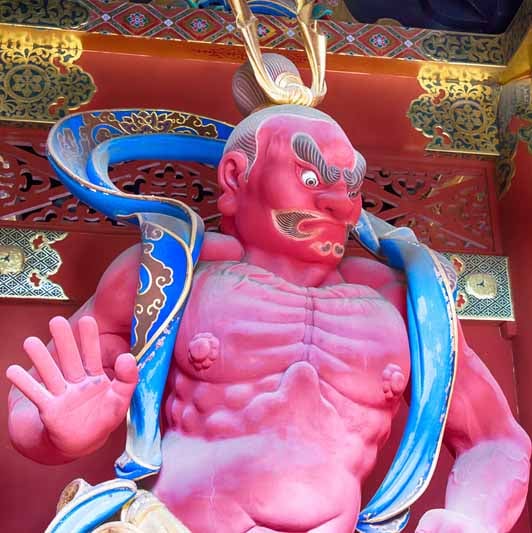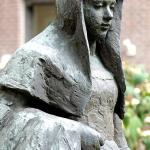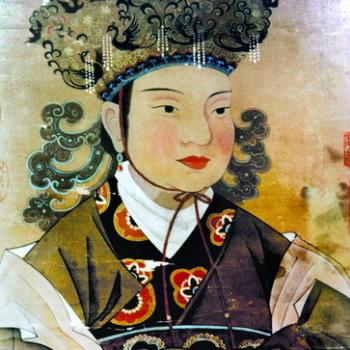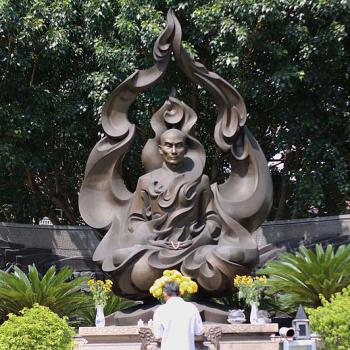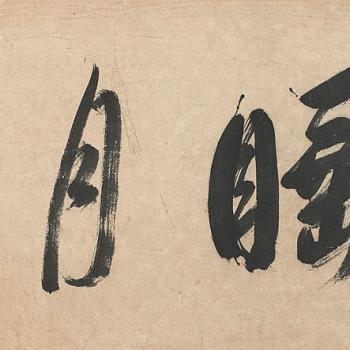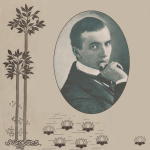Heracles was a hero of ancient Greek mythology. He’s better known to most of us by his Roman name, Hercules. Hercules was a favorite subject of Greek and Roman art. His muscular likeness was so widespread in the ancient world that it influenced Buddhist temple art in far-away China and Japan. This is the story of how Hercules reached Japan.
This story begins with Alexander the Great (356–323 BCE), king of Macedonia. Before Alexander was born, Macedonia had conquered Greece and absorbed Greek culture. The young Alexander was tutored by Aristotle himself. Alexander was only 20 when he succeeded his father to the throne. Alexander then spent most of the next ten years marching his army from Greece to northwest India, with a detour into Egypt.
After Alexander died the vast empire he had gained was divided up among four of his generals, and those empires lasted several more years. Hellenistic culture was introduced into large parts of Asia. Greek became a common language throughout western and central Asia. The influence of Greek art spread, also.
The Kushan Empire
Seleucus I Nicator (c. 358–281 BCE) was a general of Alexander the Great who became head of a vast territory that stretched from the Mediterranean to the Indus Valley (see map). This was called the Seleucid Empire. Seleucus I Nicator lost part of his territory in a war with the Mauryan Empire of India, which took over much of what is now Pakistan and Afghanistan (see map). The third Mauryan emperor, Ashoka the Great, was a convert to Buddhism. Ashoka reigned from about about 268 to 232 BCE, and much of his focus was on spreading Buddhism throughout his empire and beyond. Because of Ashoka’s efforts, by the 1st century CE Buddhism was one of the dominant religions in much of central Asia, especially what is now Pakistan and Afghanistan.
From the 1st through 3rd century much of Ashoka’s western empire became what was called the Kushan Empire. At its peak the Kushan Empire took in most of modern-day Uzbekistan, Afghanistan, Pakistan, and northern India. The Kushan Empire was at a center point of the network of trade routes that came to be called the Silk Road. By the 1st century the Silk Road connected the Roman Empire in the West to China in the East. The Kushan Empire was a place where Greek, Roman, Persian, and Indian cultural influences mingled freely.
The Kushan Empire also was very much a Buddhist empire. Buddhism was introduced into China mostly by Buddhist monks of Kushan who followed Silk Road traders into China. The Kushan kings and wealthy nobility built Buddhist temples and invested in Buddhist art. Some of the best art of this period is associated with Gandhara, the ancient name of an area that is now in northern Pakistan. The artists of Gandhara made many beautiful representations of the Buddha and iconic bodhisattvas in a style that was unmistakably influenced by Greece.
Sculpting Vajrapani
This takes us to Vajrapani, or Vajirapāṇin in Pali, who is what we might call a recurring character from early Buddhist scriptures. The name Vajrapani could be translated as “vajra in hand.” A vajra (Sanskrit) or vajira (Pali) is a ritual weapon associated with Indra in the Vedas, the most ancient scriptures of Hinduism. This weapon combines qualities of a diamond and of lightening. Vajrapani is identified in early Buddhist scriptures as a yaksha (Sanskrit) or yakkha (Pali), a kind of nature spirit, usually but not always benevolent, often associated with water and woodlands. Yakshas emerged from ancient south Asian folklore and have a wide variety of characteristics.
As far as Vajrapani is concerned, we don’t have much in the way of a description from scriptures. In the Pali Canon he pops into visibility when someone argues with the Buddha. For example, in the Cula-Saccaka Sutta (Majjhima Nikaya 35), Vajrapani is “poised in the air” above the person challenging the Buddha. Other than that, it just says he is carrying a vajra. In the Pali scriptures it’s said he is visible only to the Buddha and his challenger, and Vajrapani may threaten to split the challenger’s head into seven pieces if he fails three times to respond to a reasonable question. I don’t believe the threat is ever carried out, however.
We might assume that someone who can float in the air is a feathery or airy sort of creature. But at least some artists of Gandhara, challenged to sculpt Vajrapani, decided he must be something like the Buddha’s bodyguard and modeled him after Hercules. In Greek and Roman art, Hercules is most often depicted naked, carrying a club and a lion skin. For example, here is a Greek Heracles on the left, and a Gandhara artist’s depiction of the Buddha and Vajrapani on the right.
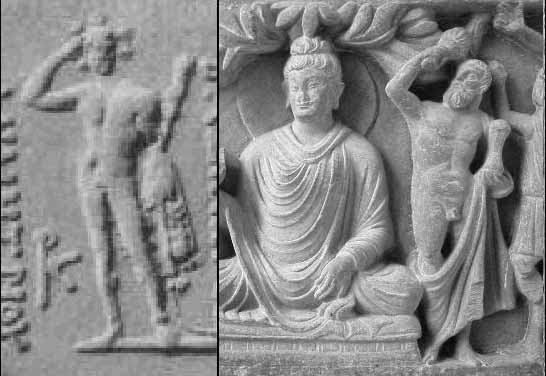
Here is another depiction of the Buddha and Vajrapani, from Gandhara, 2nd century CE.
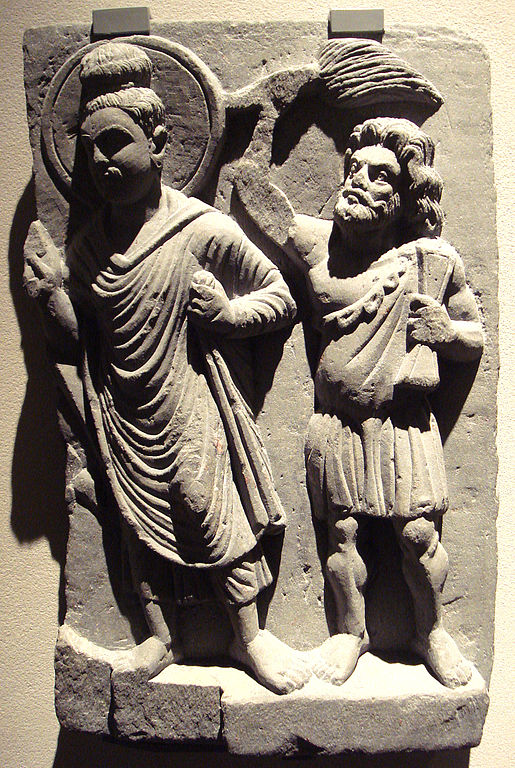
Vajrapani in Mahayana Buddhism
In Mahayana Buddhism, the form of Buddhism that dominates east Asia and is the basis of Tibetan Buddhism, Vajrapani became a bodhisattva, an enlightened being who vows to bring all beings to enlightenment. Some bodhisattvas are iconic characters of Buddhist art and literature who represent various virtues and powers, such as diligence or healing. Vajrapani is often depicted as one of the three protective deities surrounding the Buddha. These are Avalokiteshvara, who manifests the Buddha’s compassion; Manjusri, who manifests the Buddha’s wisdom; and Vajrapani, who manifests the Buddha’s power.
He is also a dharmapala, or protector spirit of the dharma. In Tibetan and Chinese Buddhist temples he and other dharma protectors are often depicted as big, fierce, even monstrous, because their job is to drive away evil. So they have to be bigger and badder than evil.
And in Japan Vajrapani morphed into characters called Nio, or “benevolent kings.” The Nio are sculptures of big, scowling, muscle-bound giants that often stand outside Buddhist temples as guardians. There are several different Nio, but they are all emanations of Vajrapani. And that’s how Hercules reached Japan.
You can read more about the art and history of Gandhara in my book The Circle of the Way: A Concise History of Zen from the Buddha to the Modern World (Shambhala, 2019).
